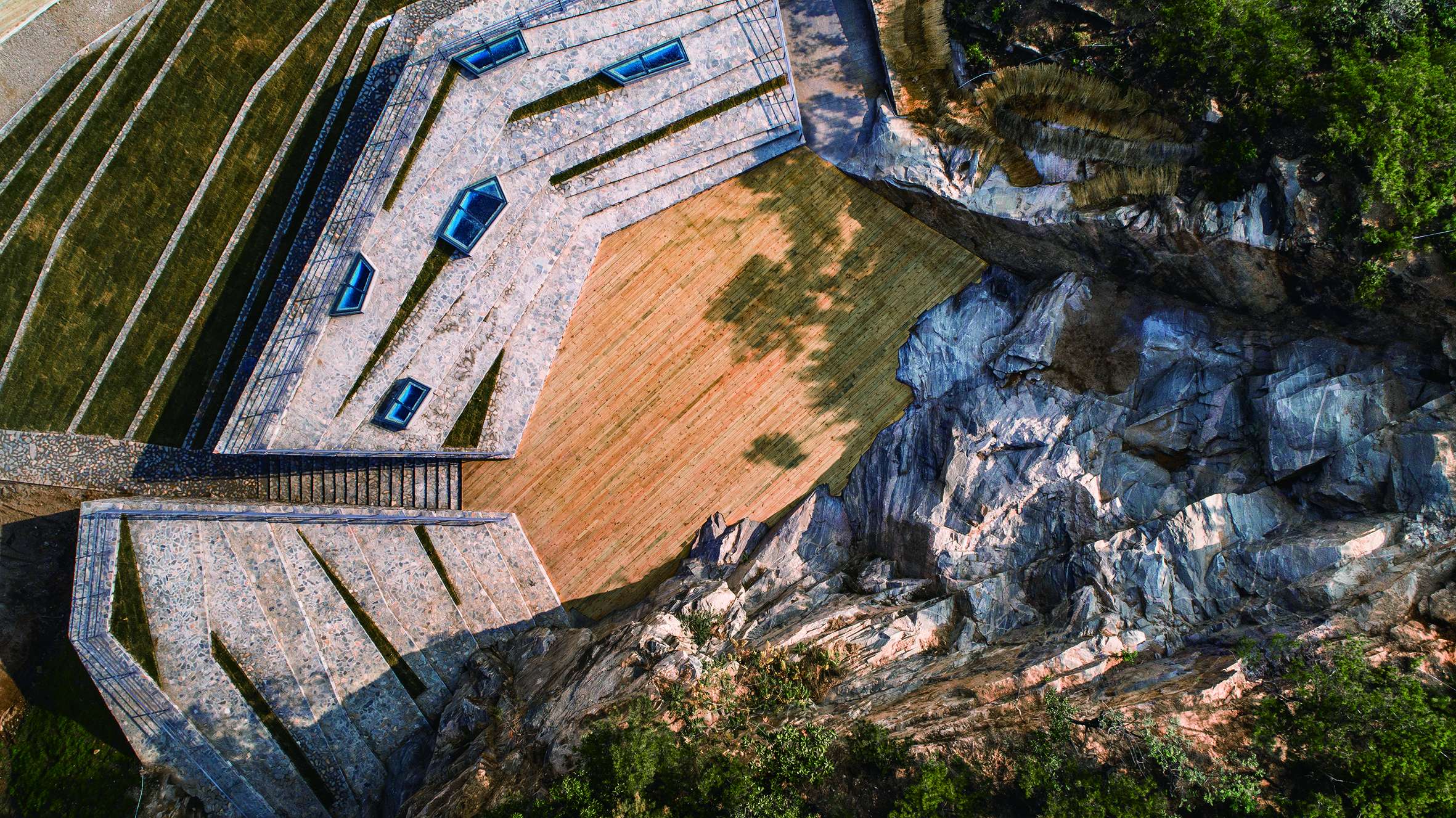
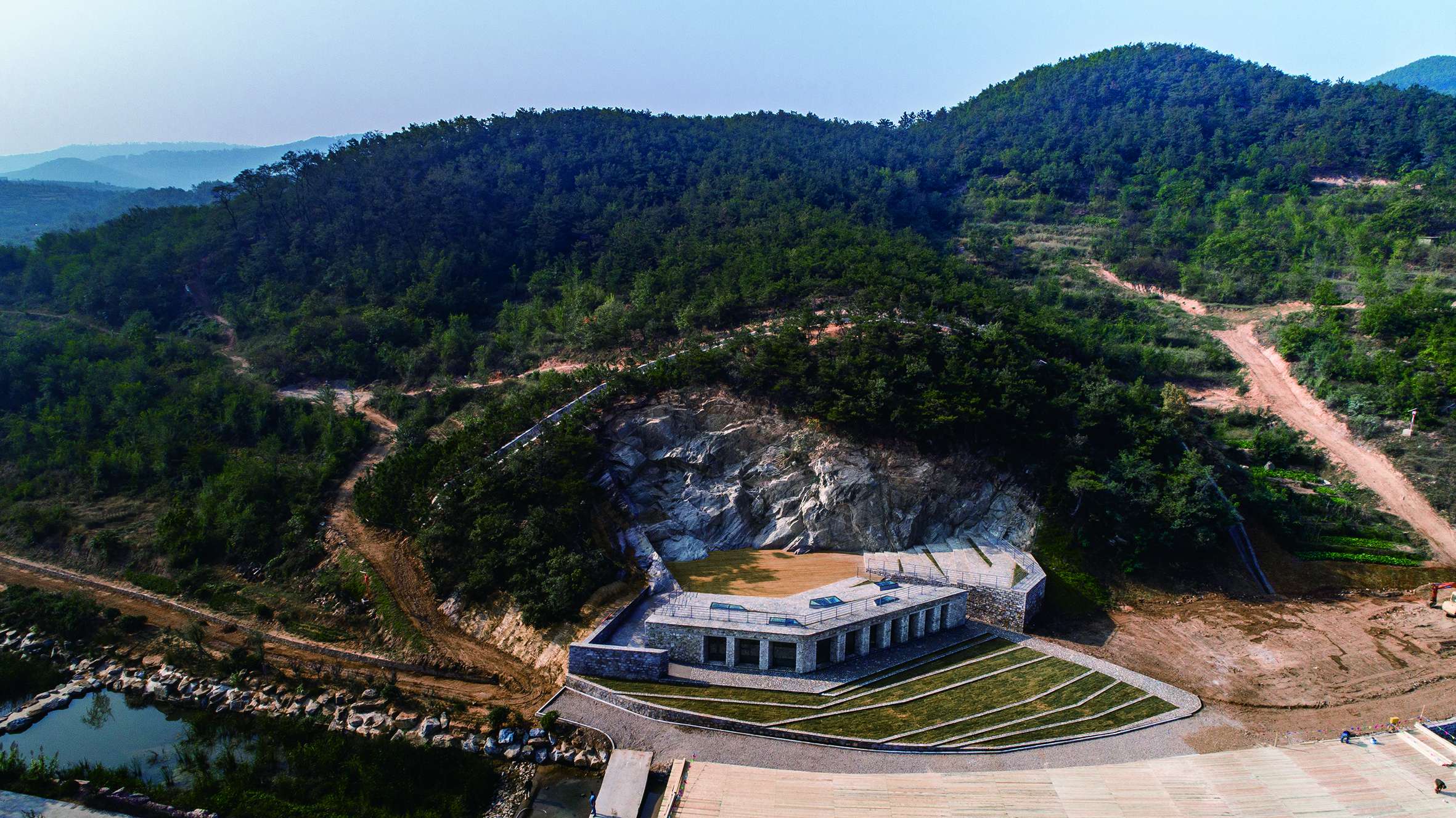
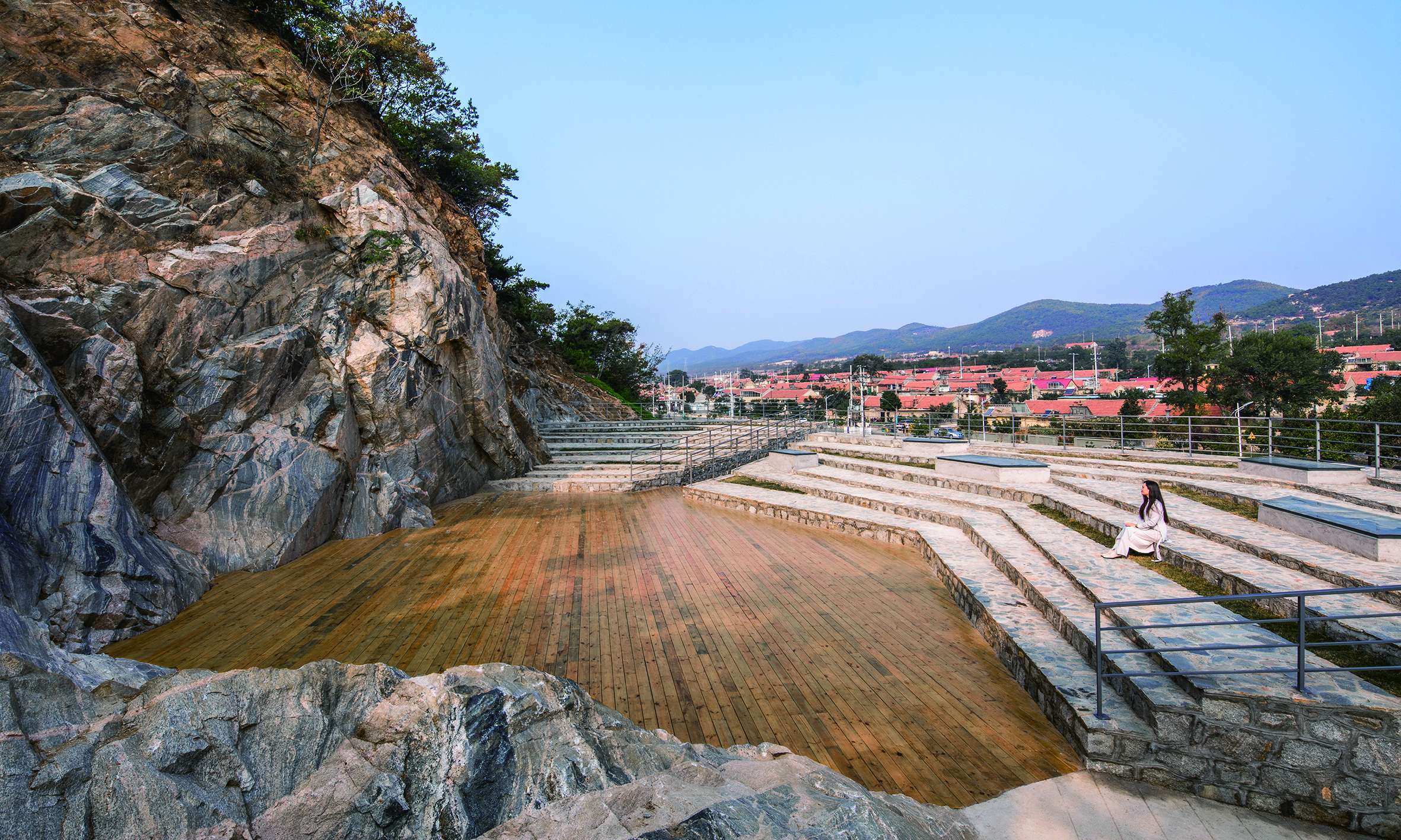





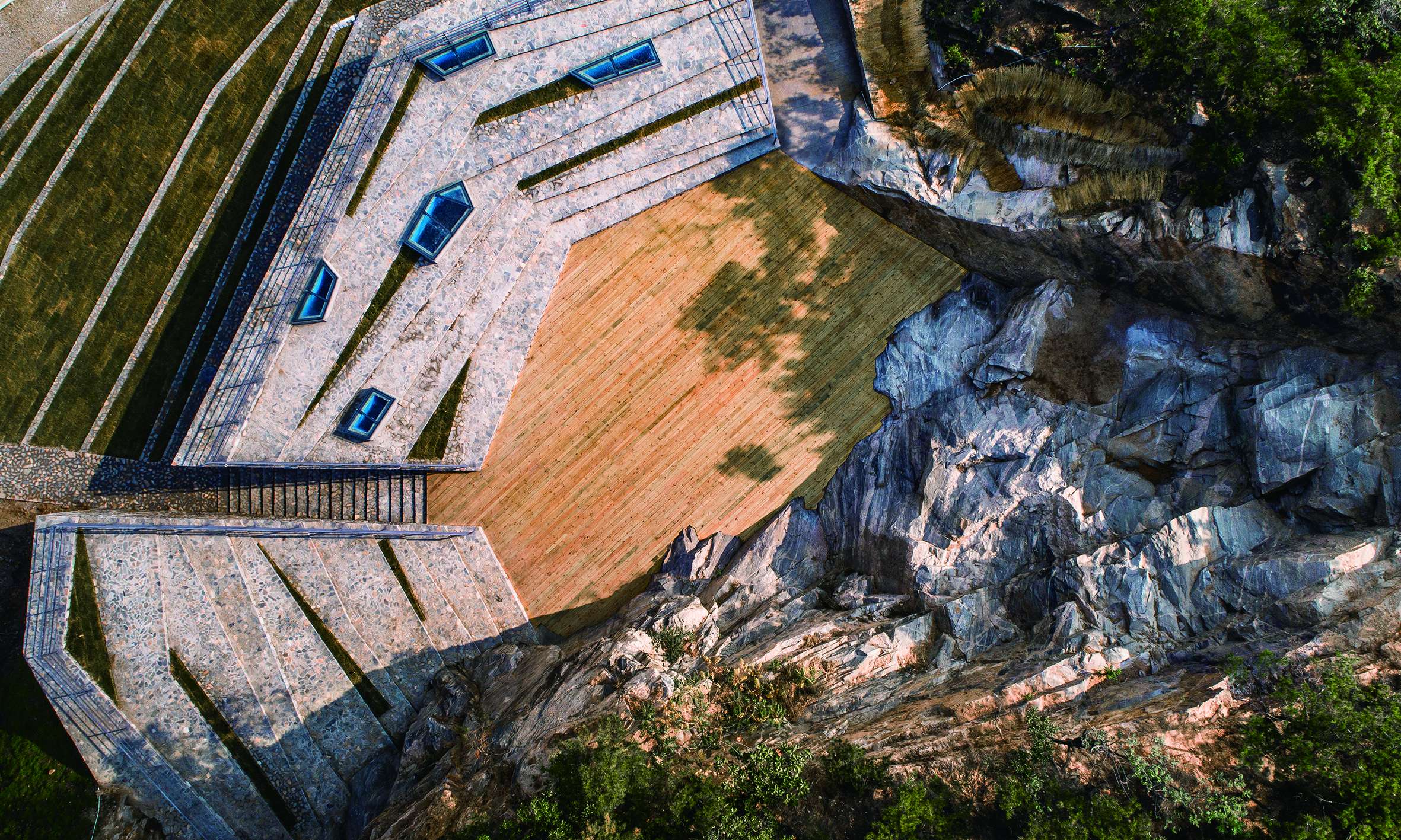
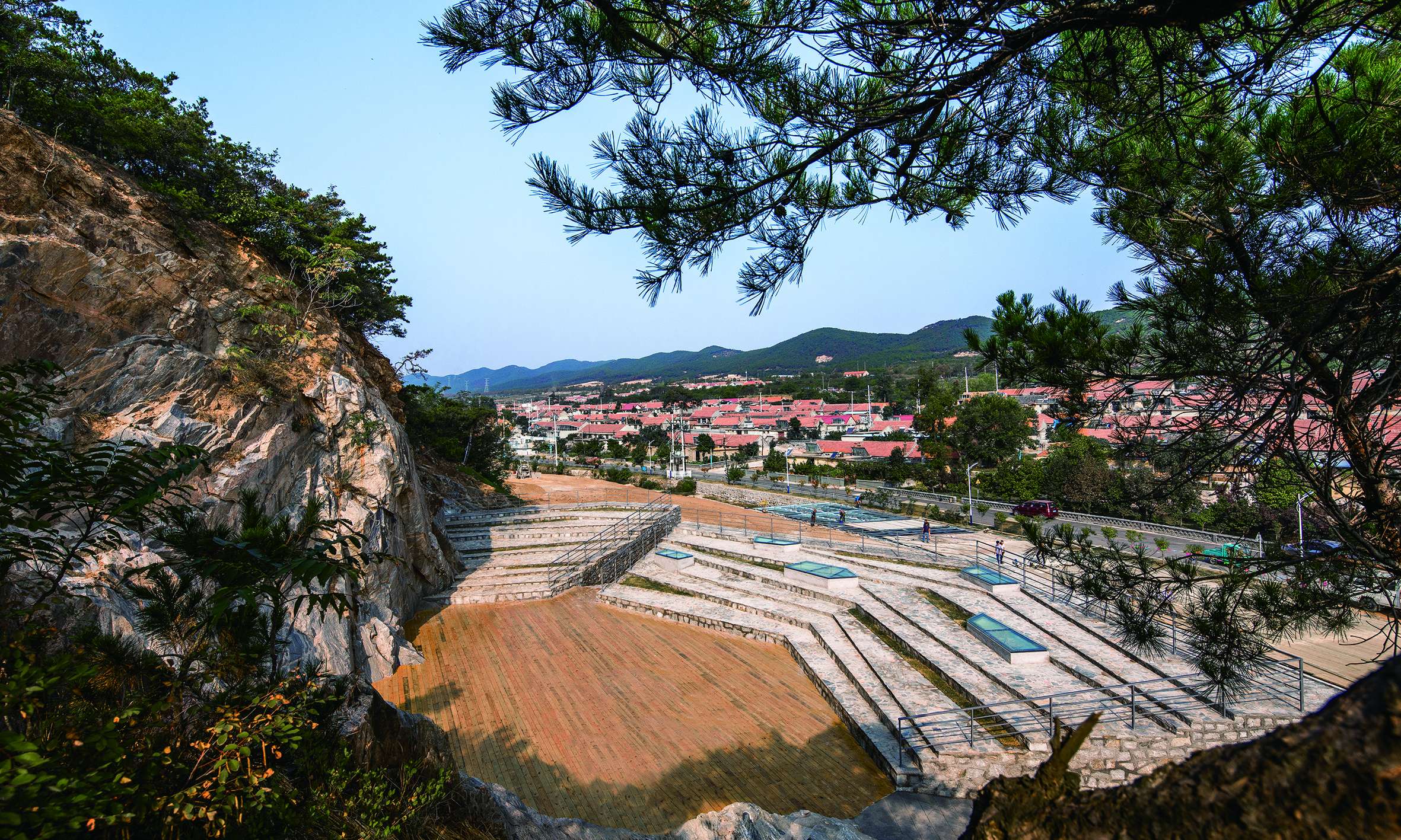
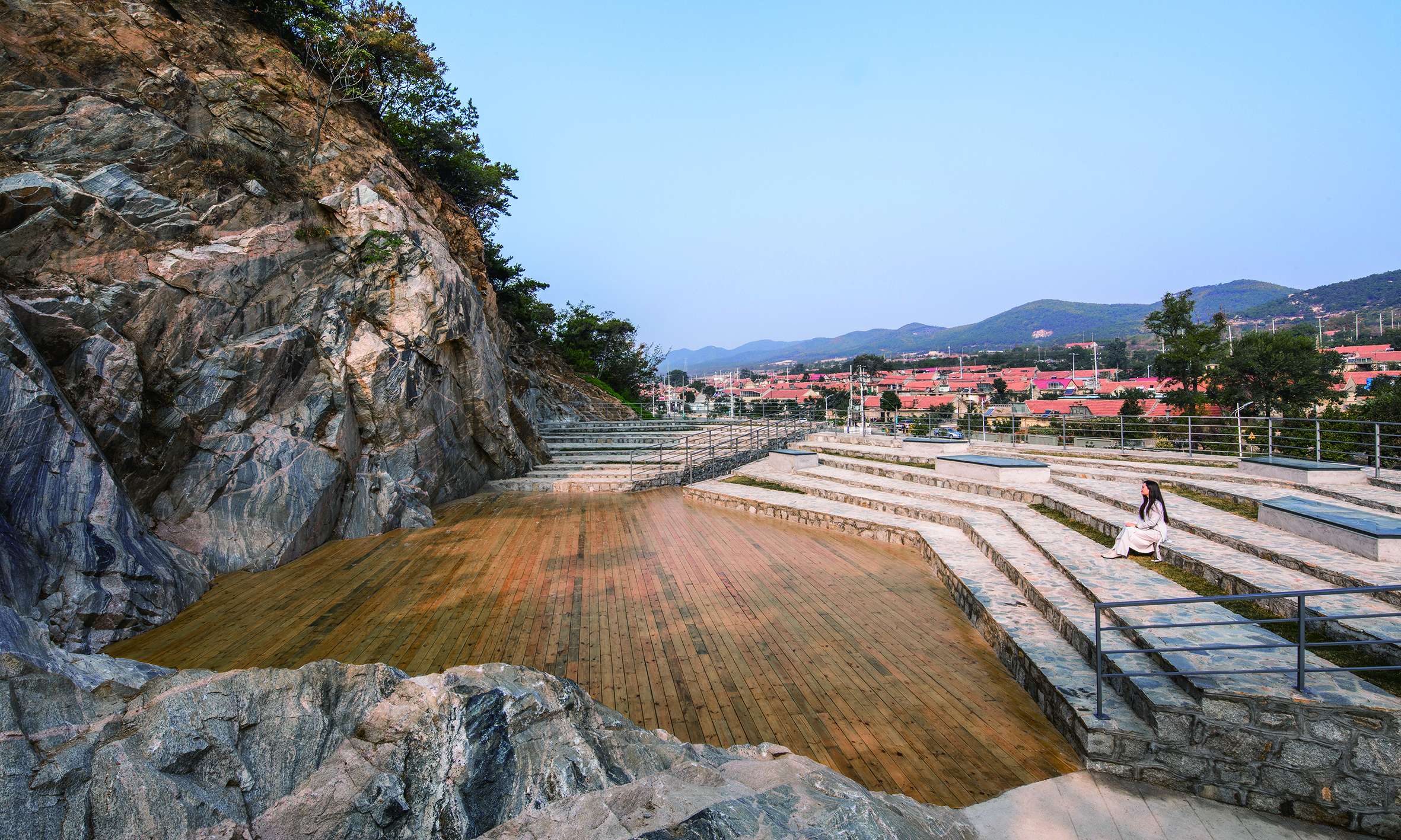
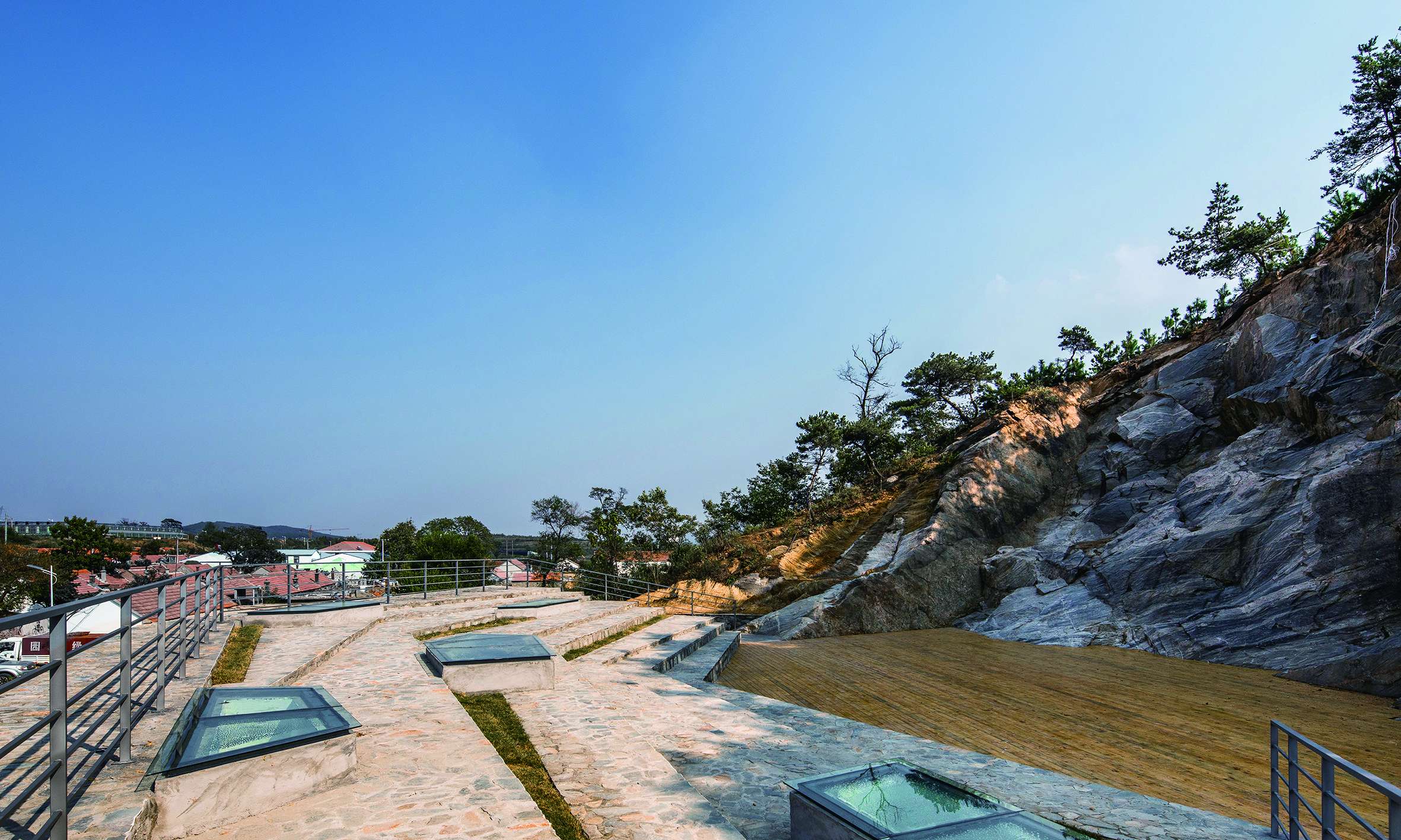
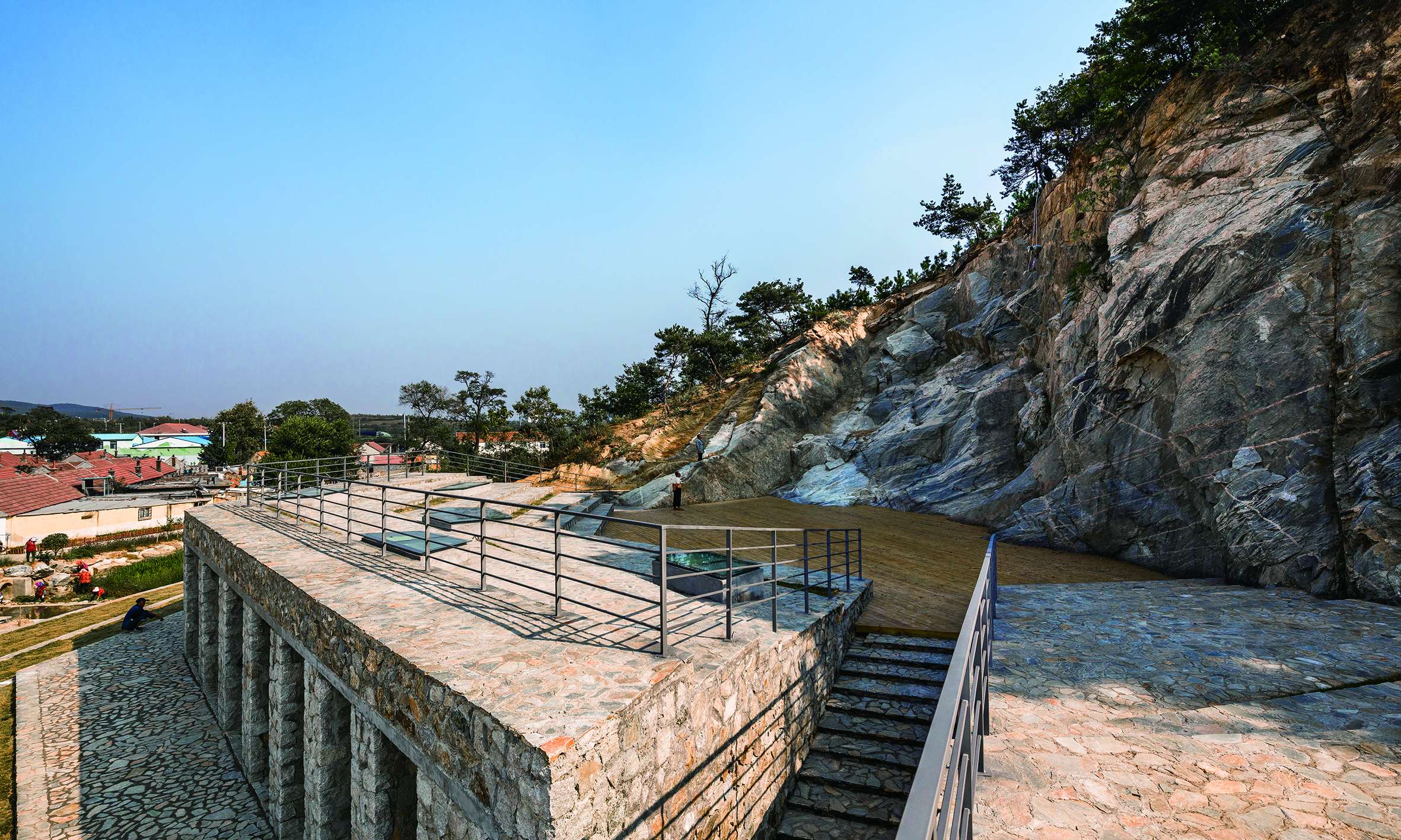
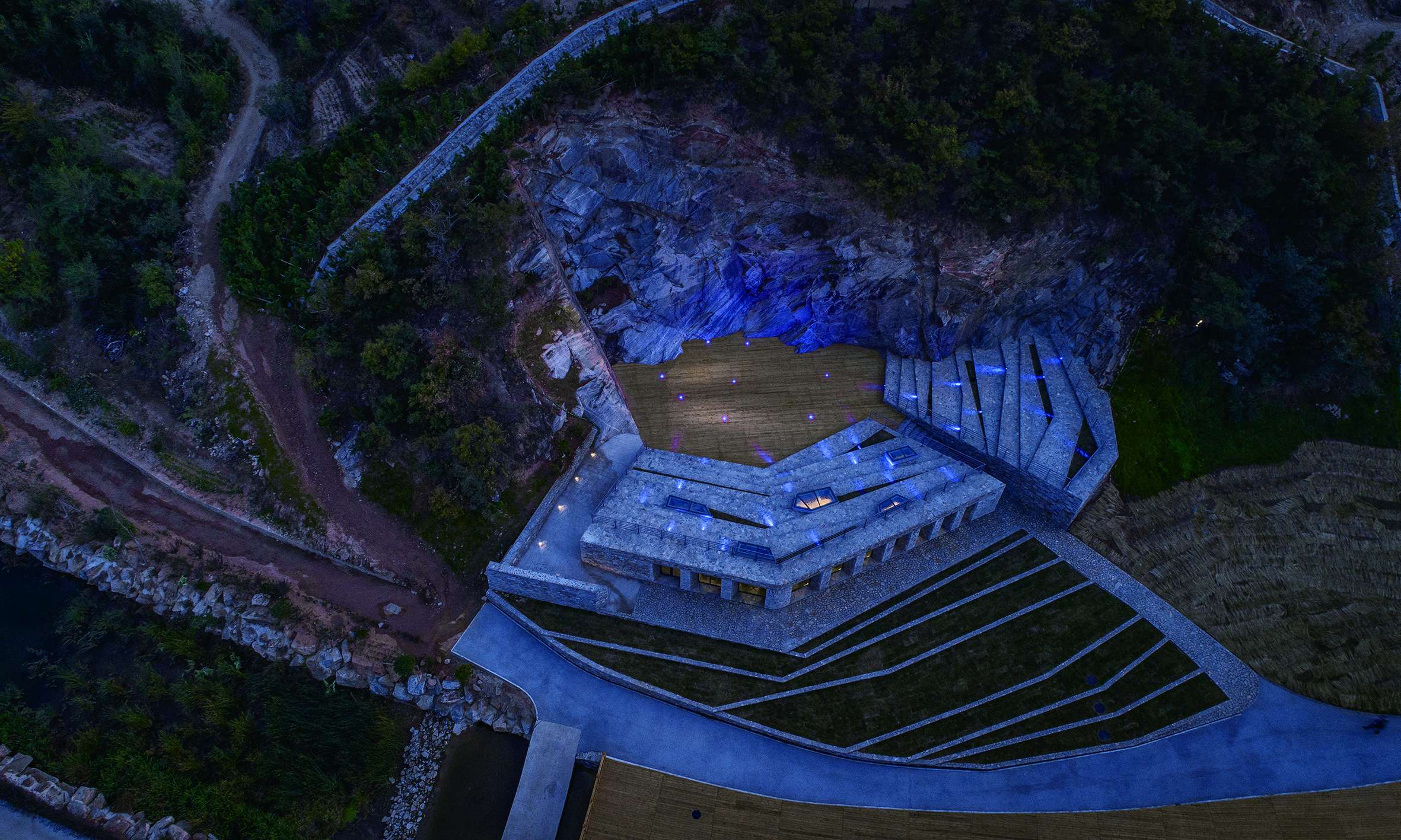
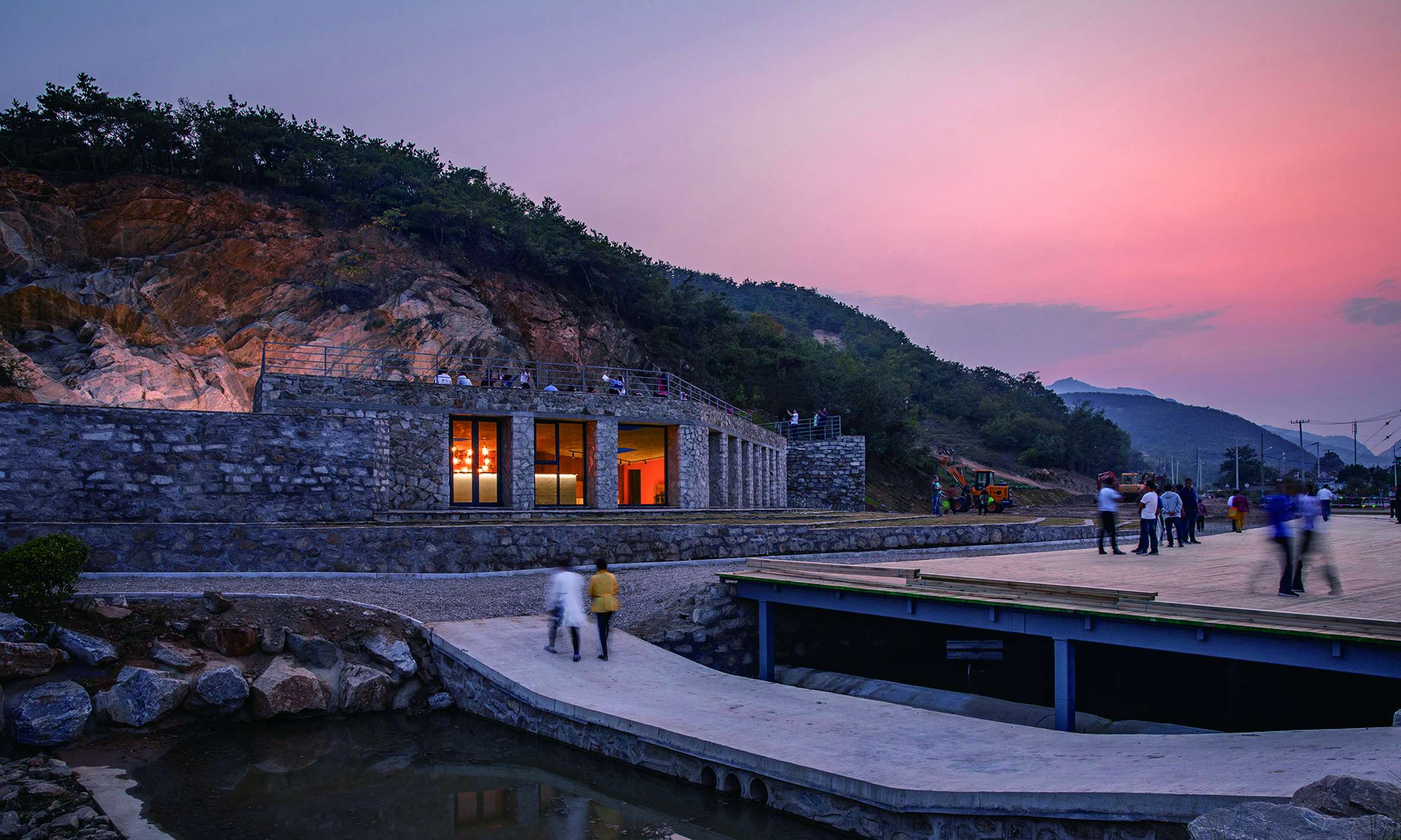
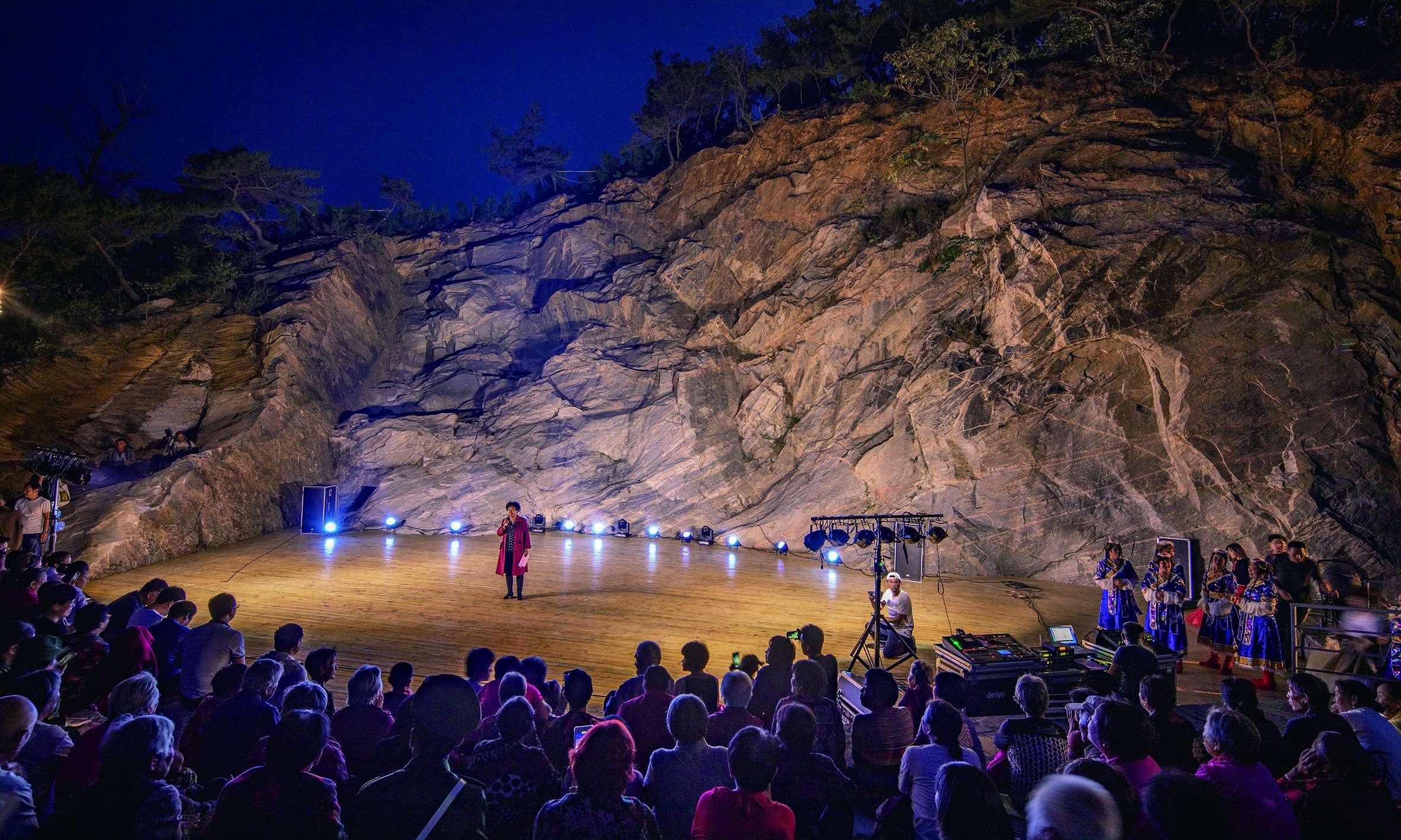
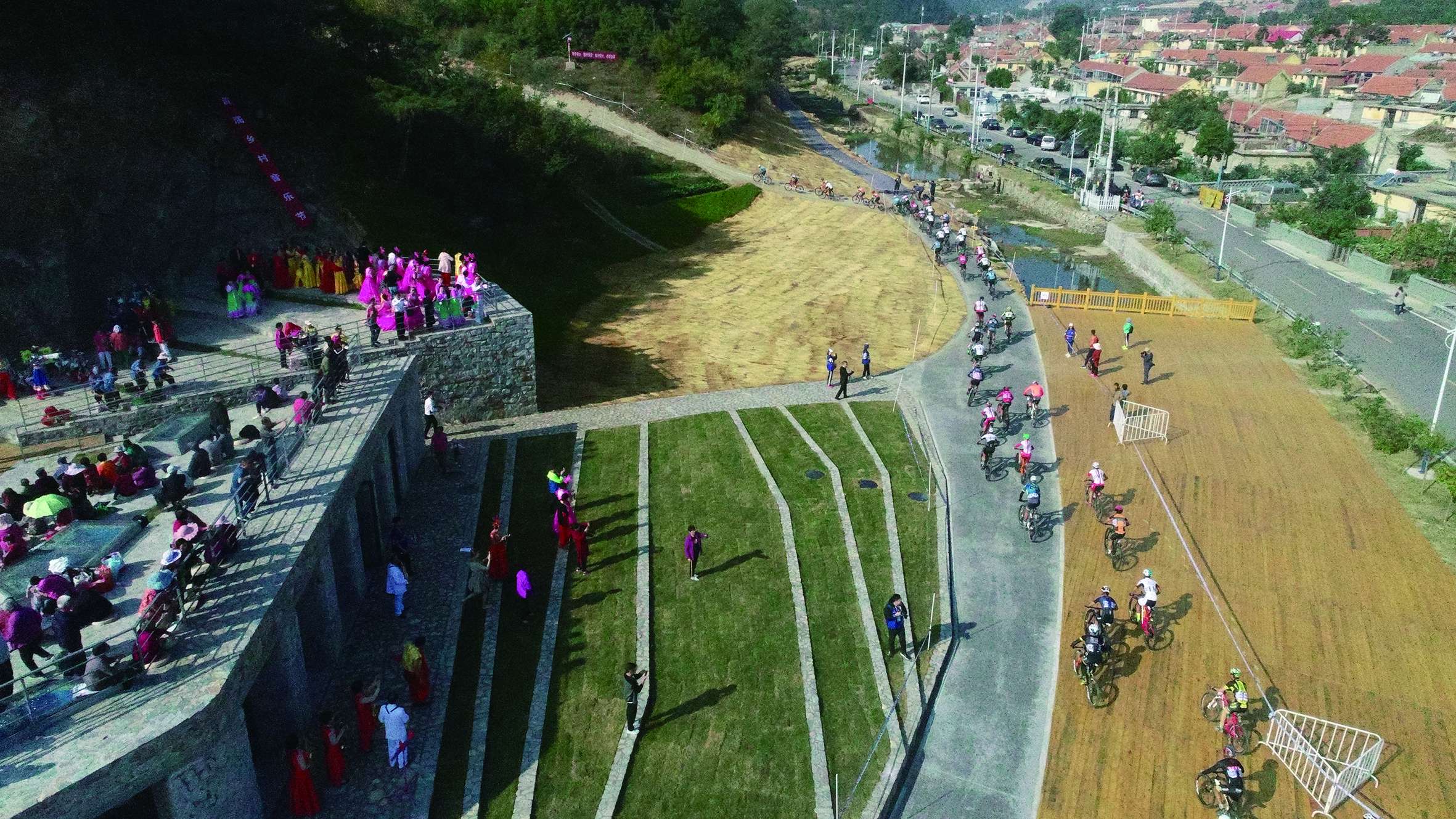

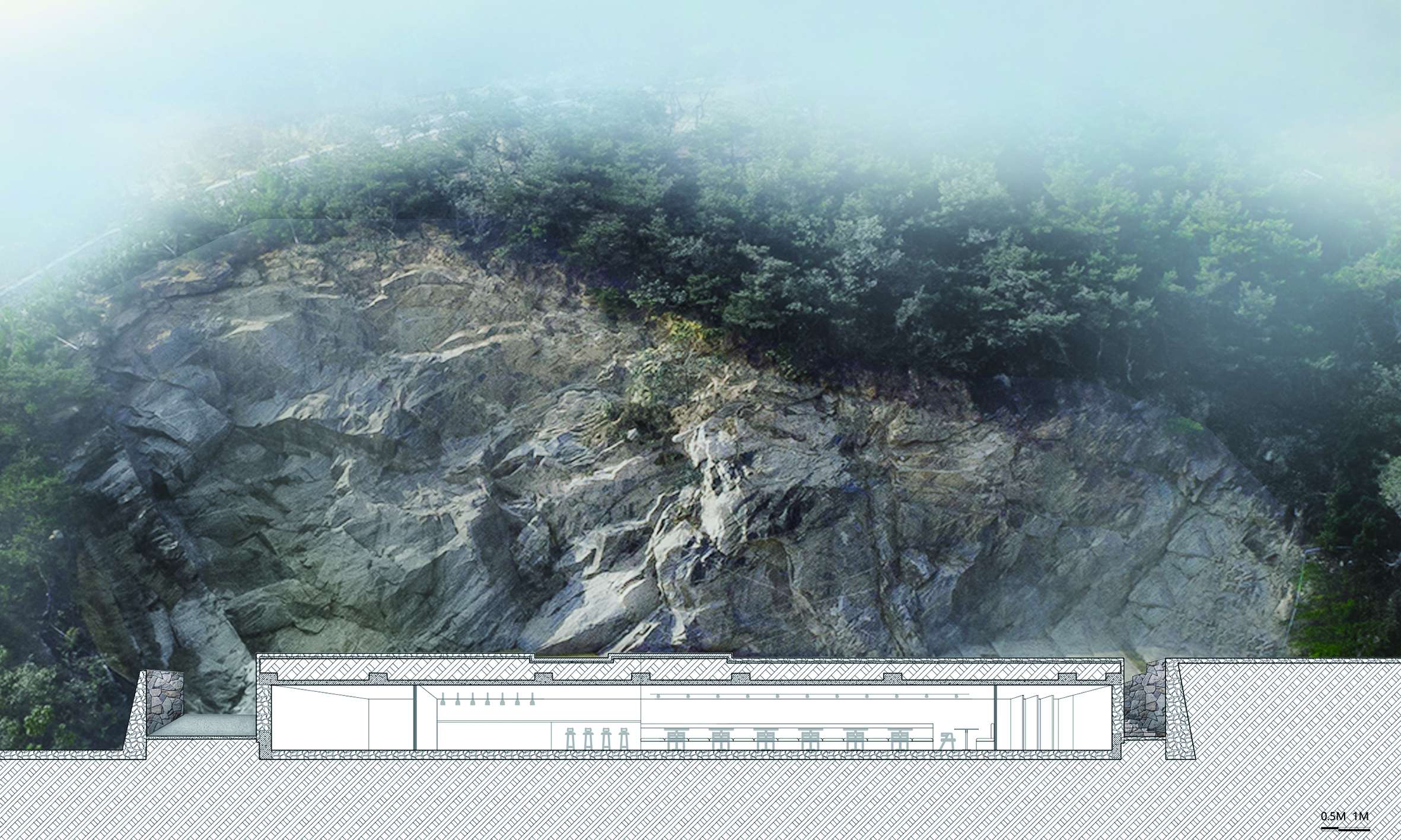
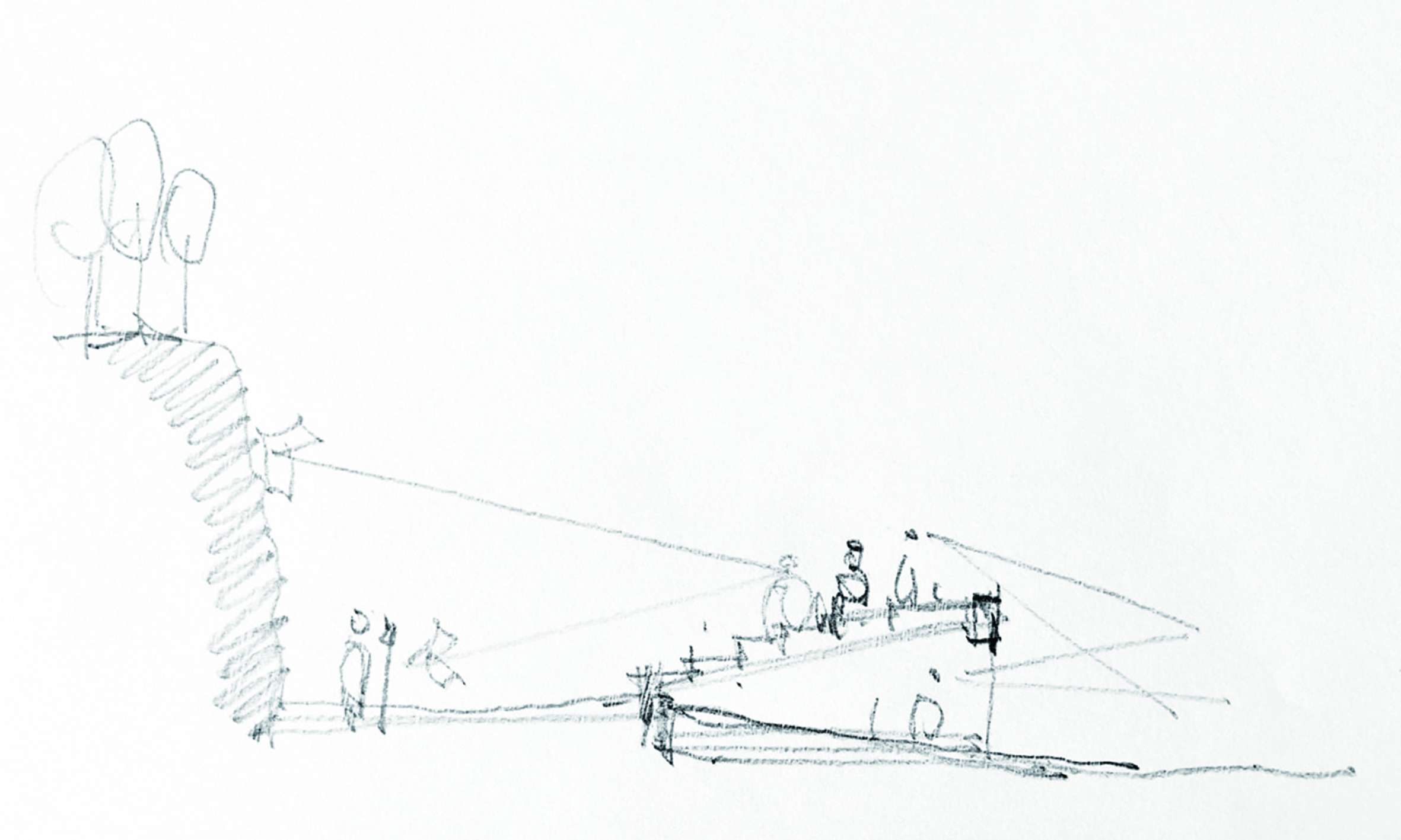
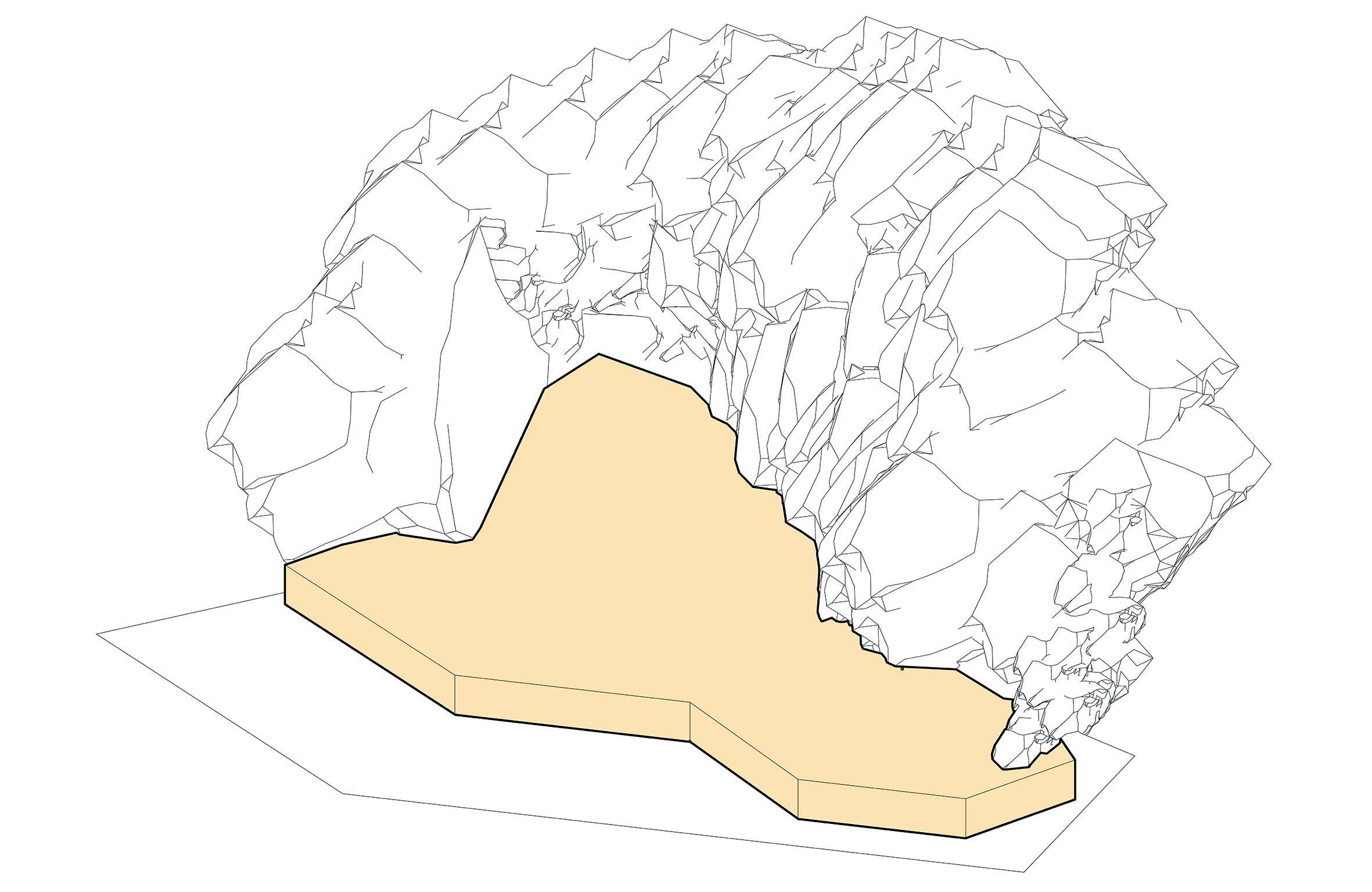
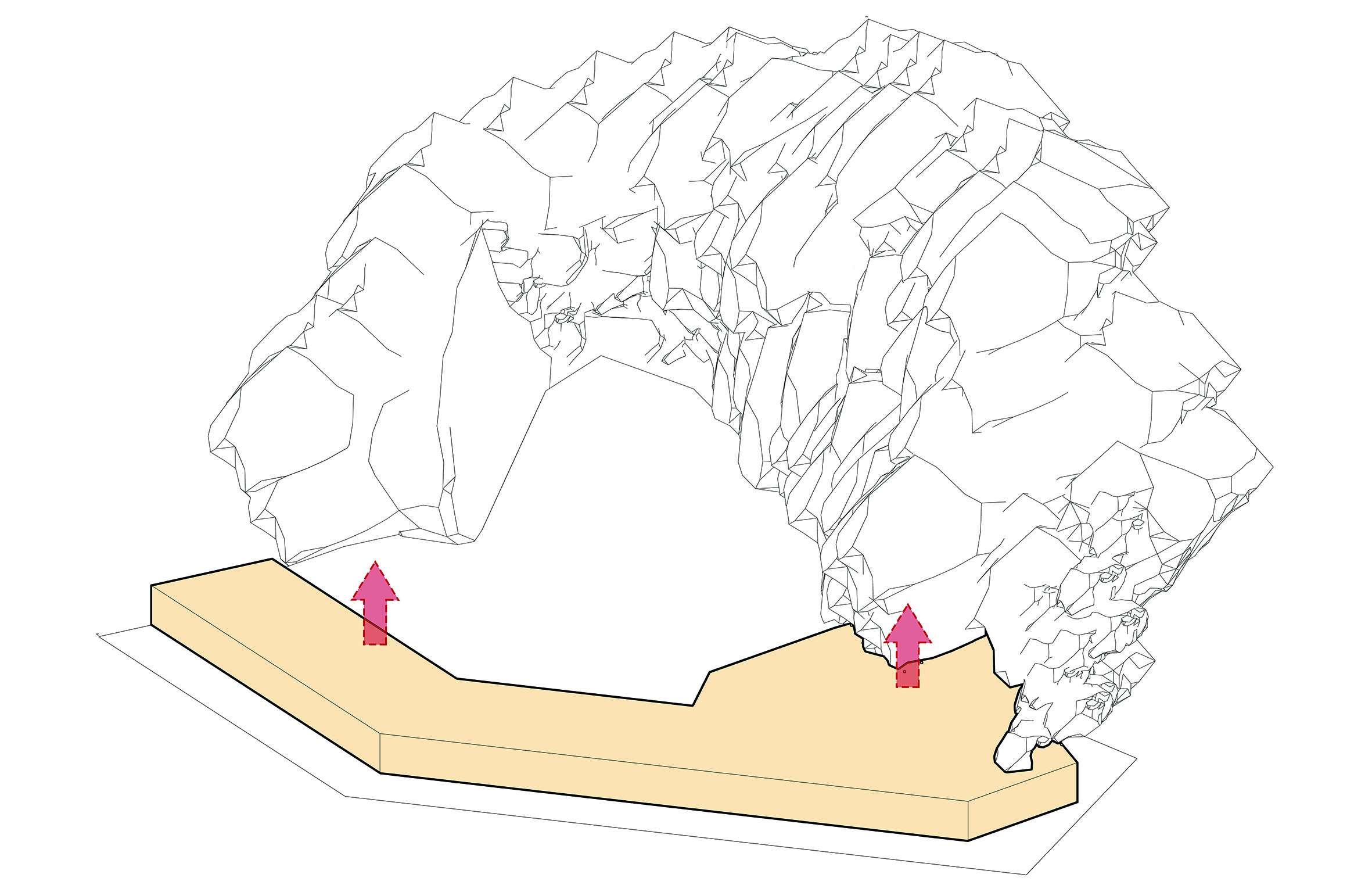
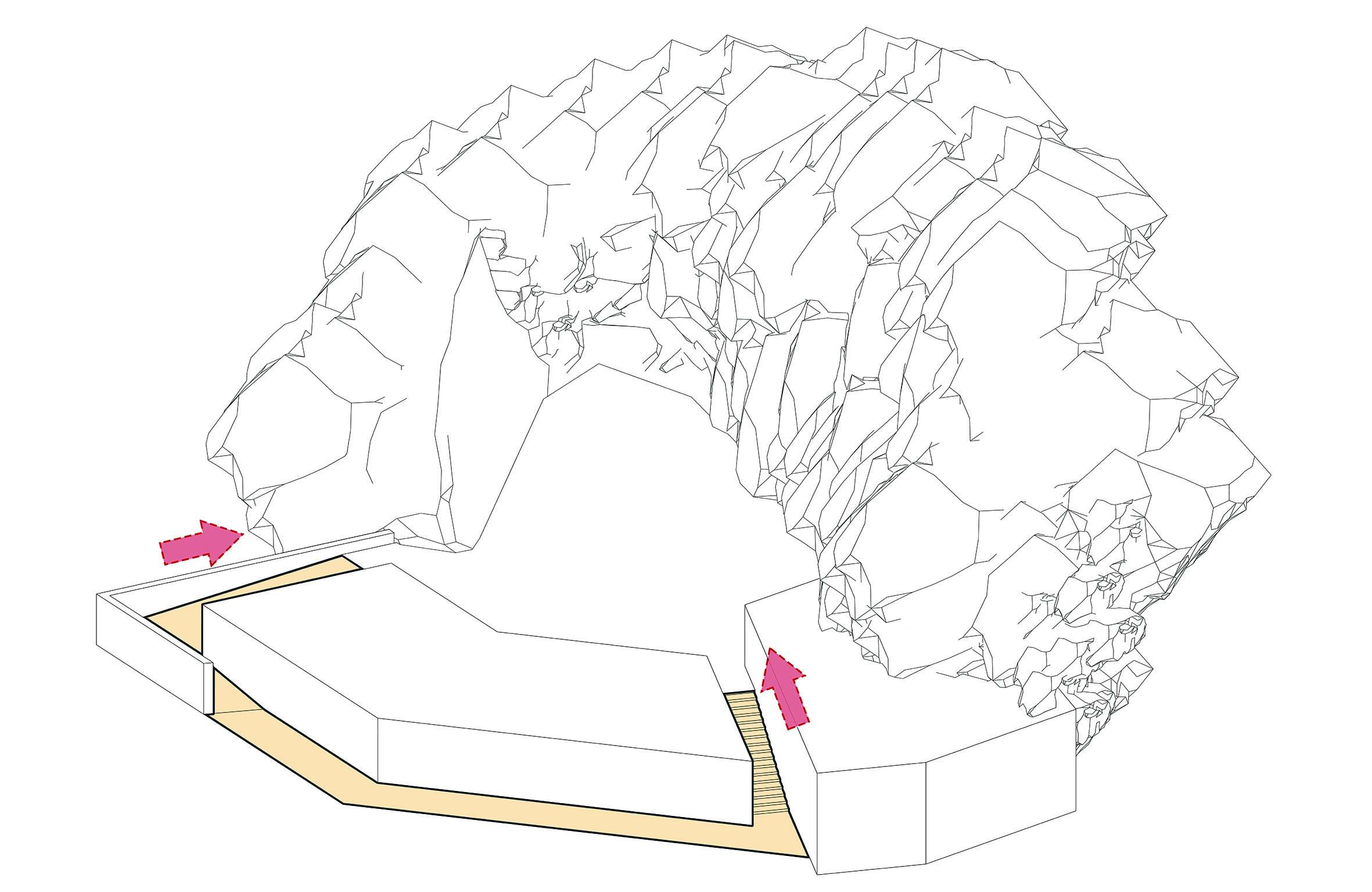
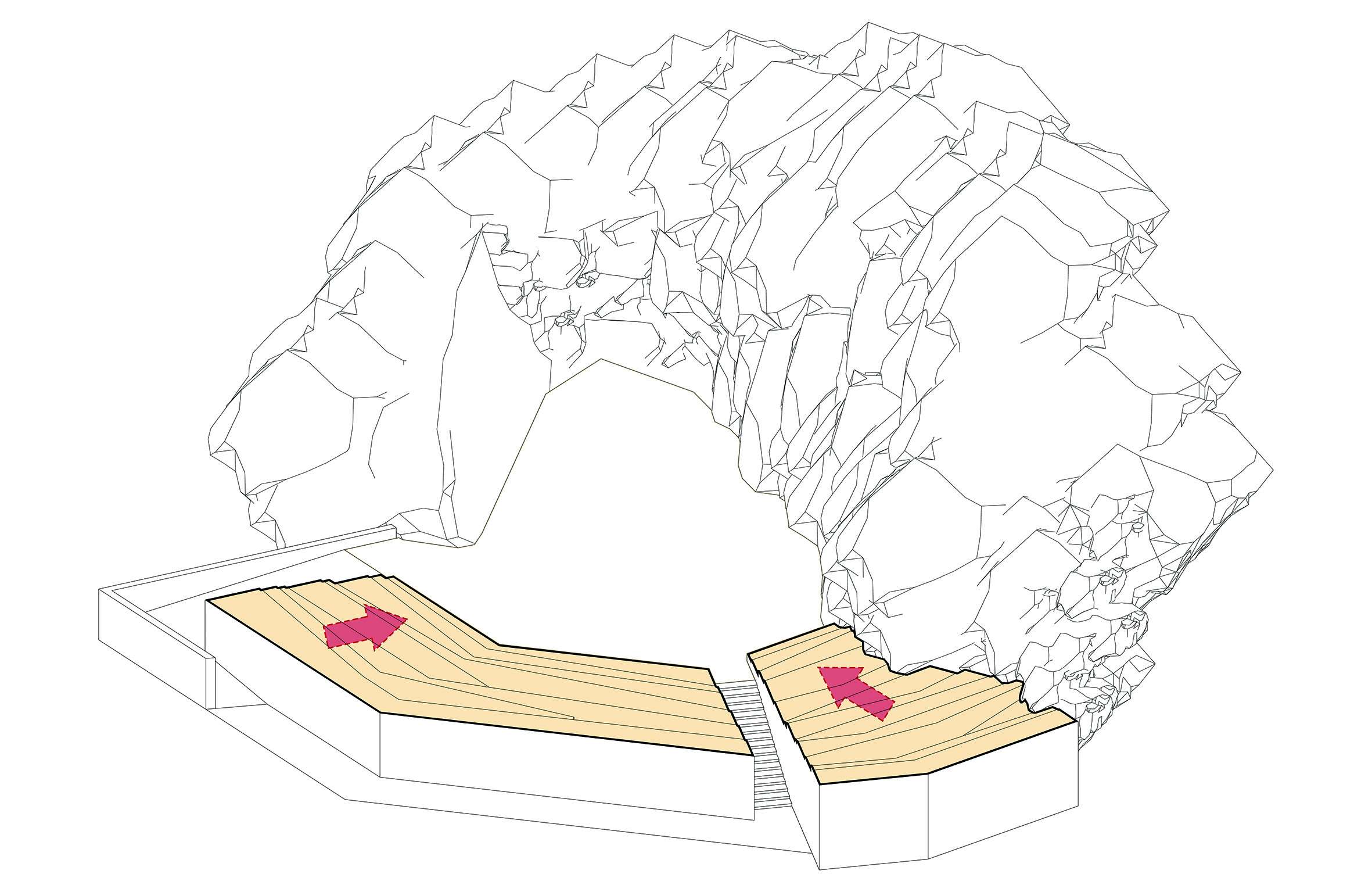
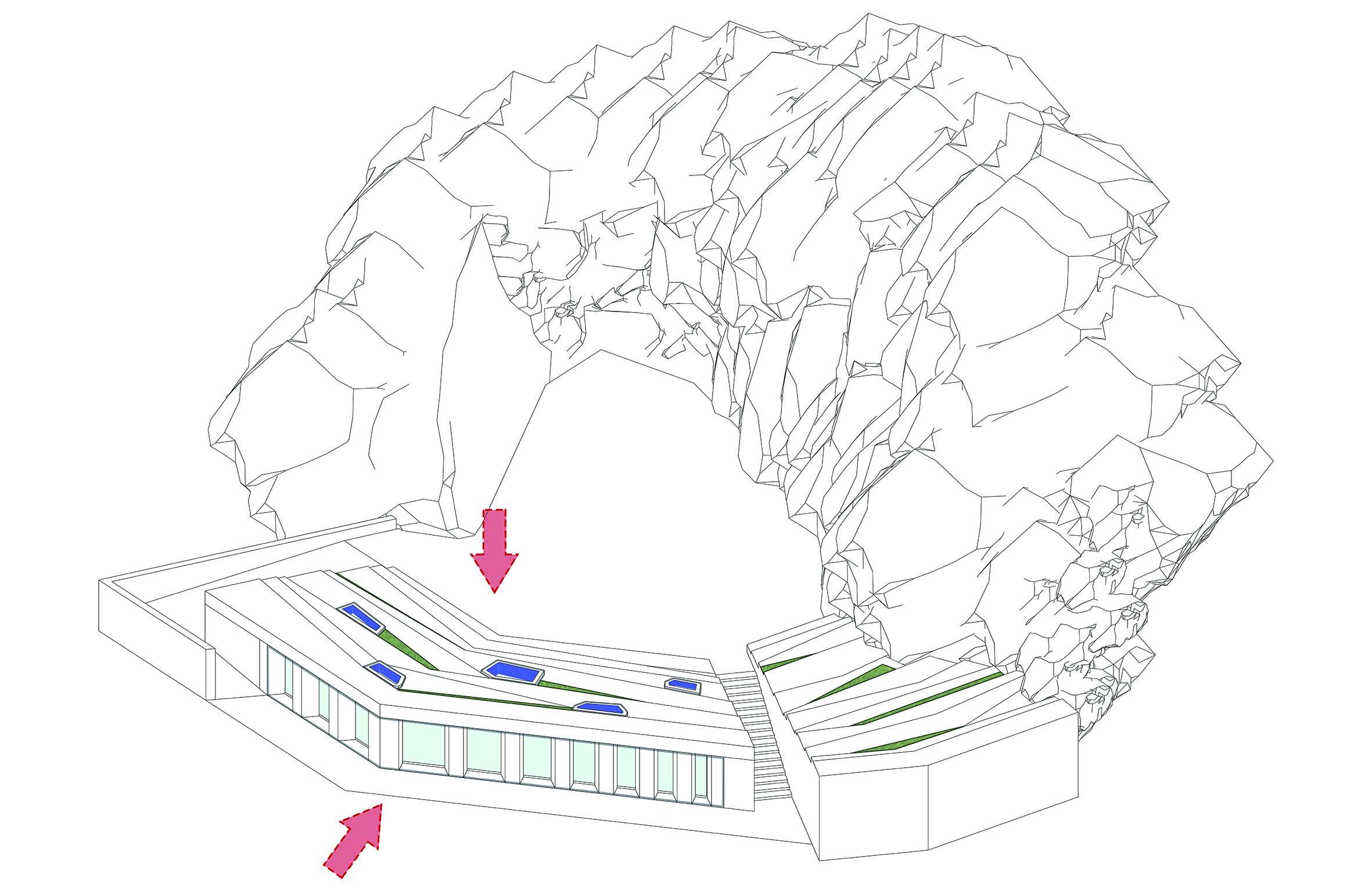
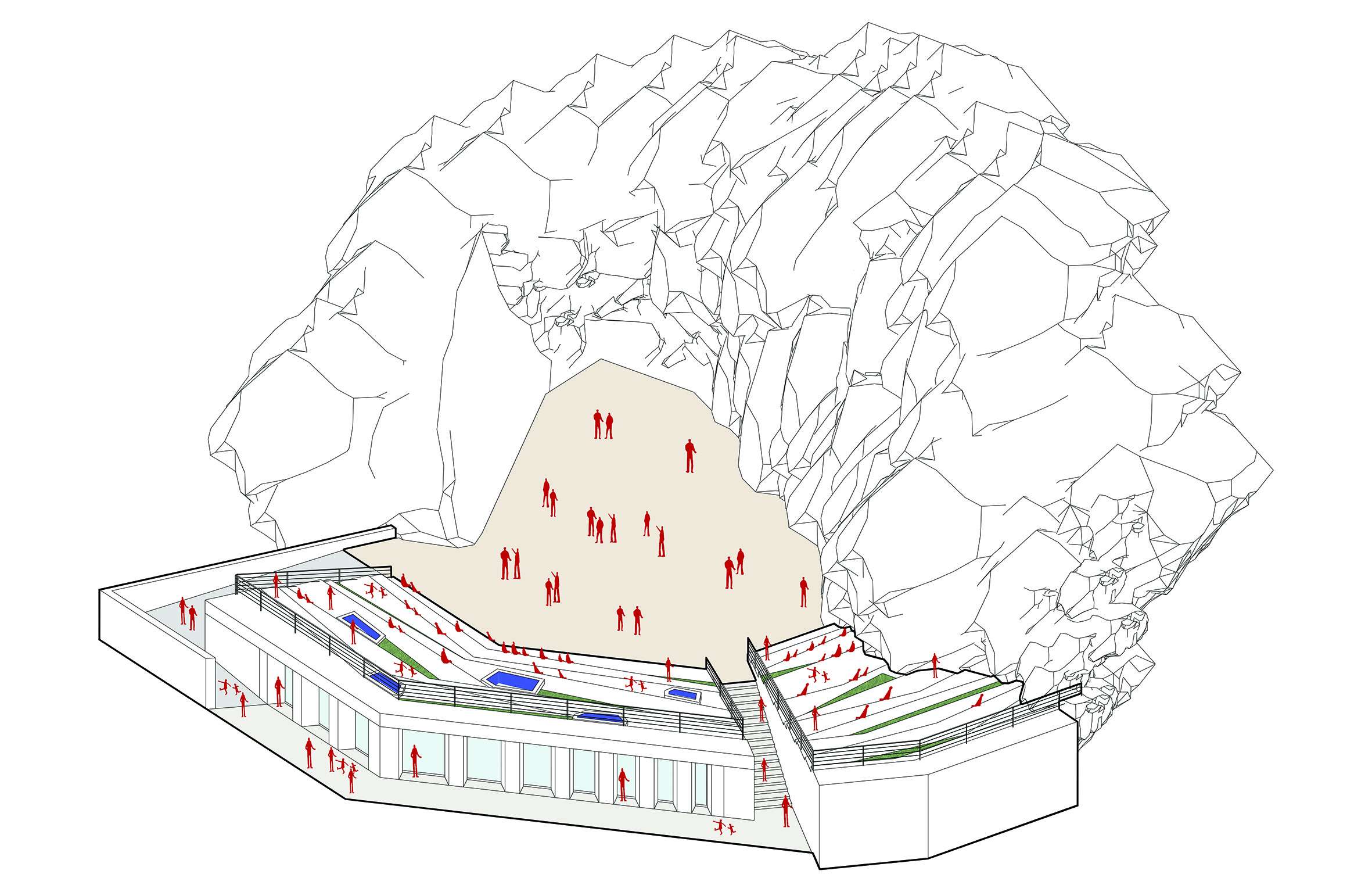
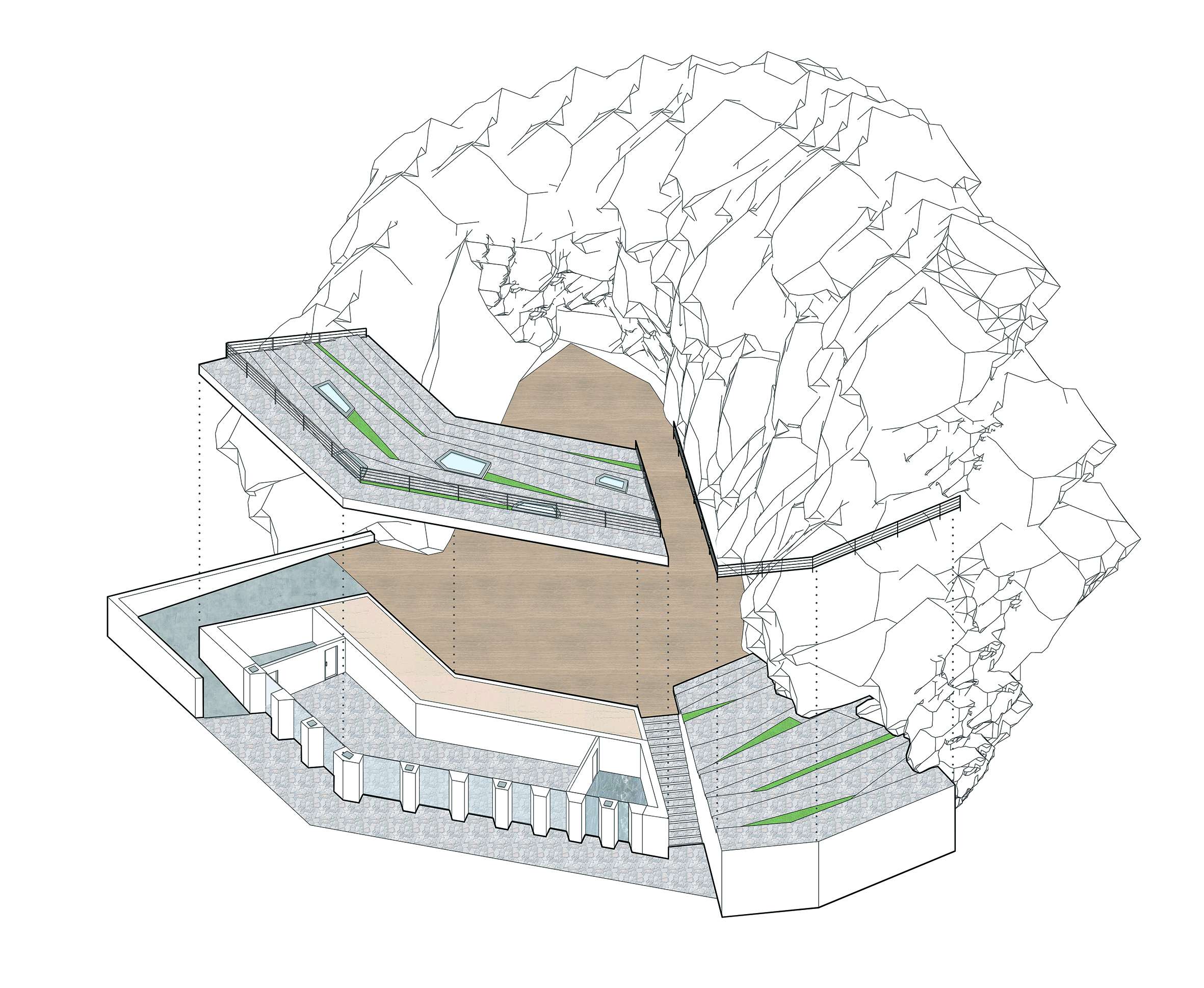
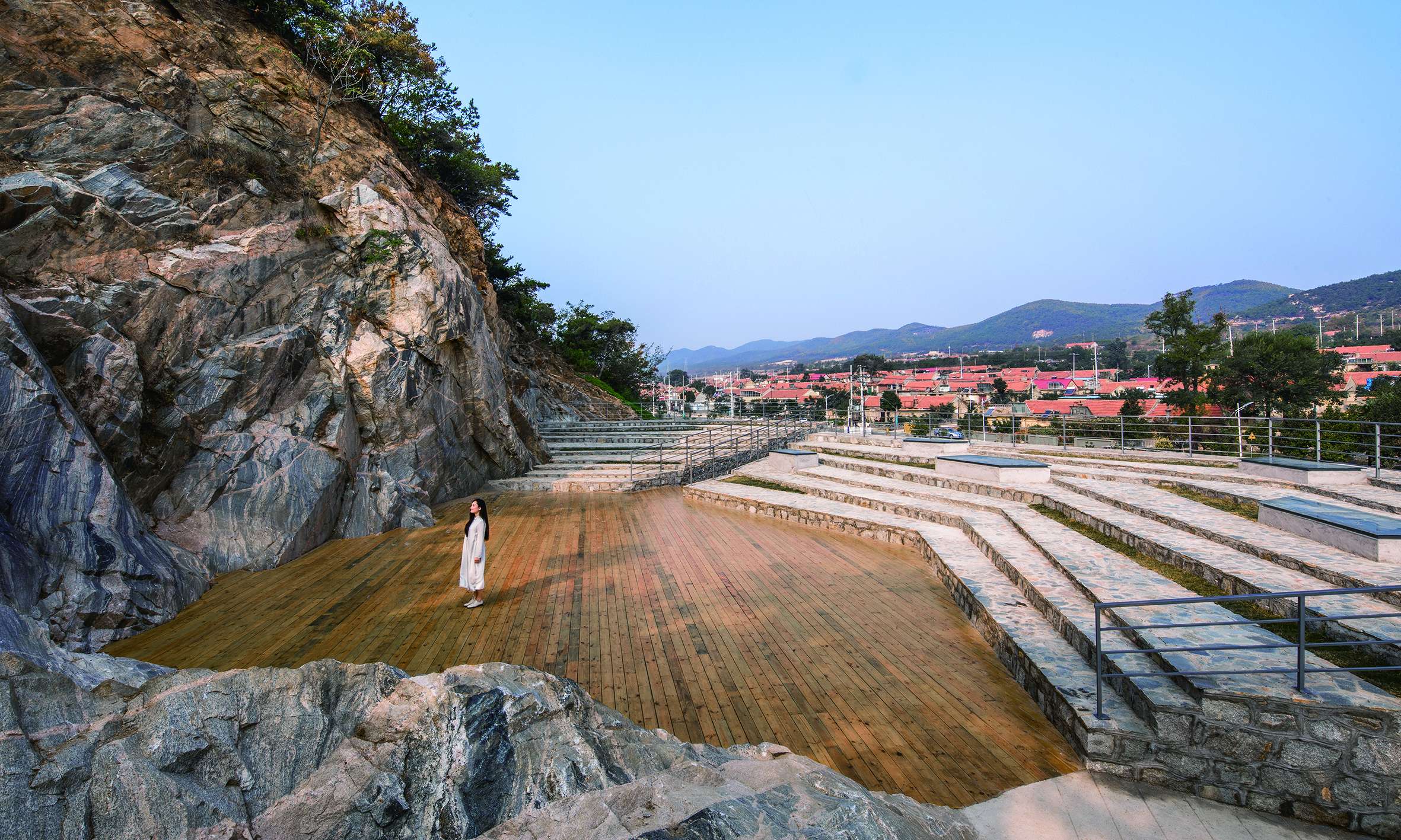
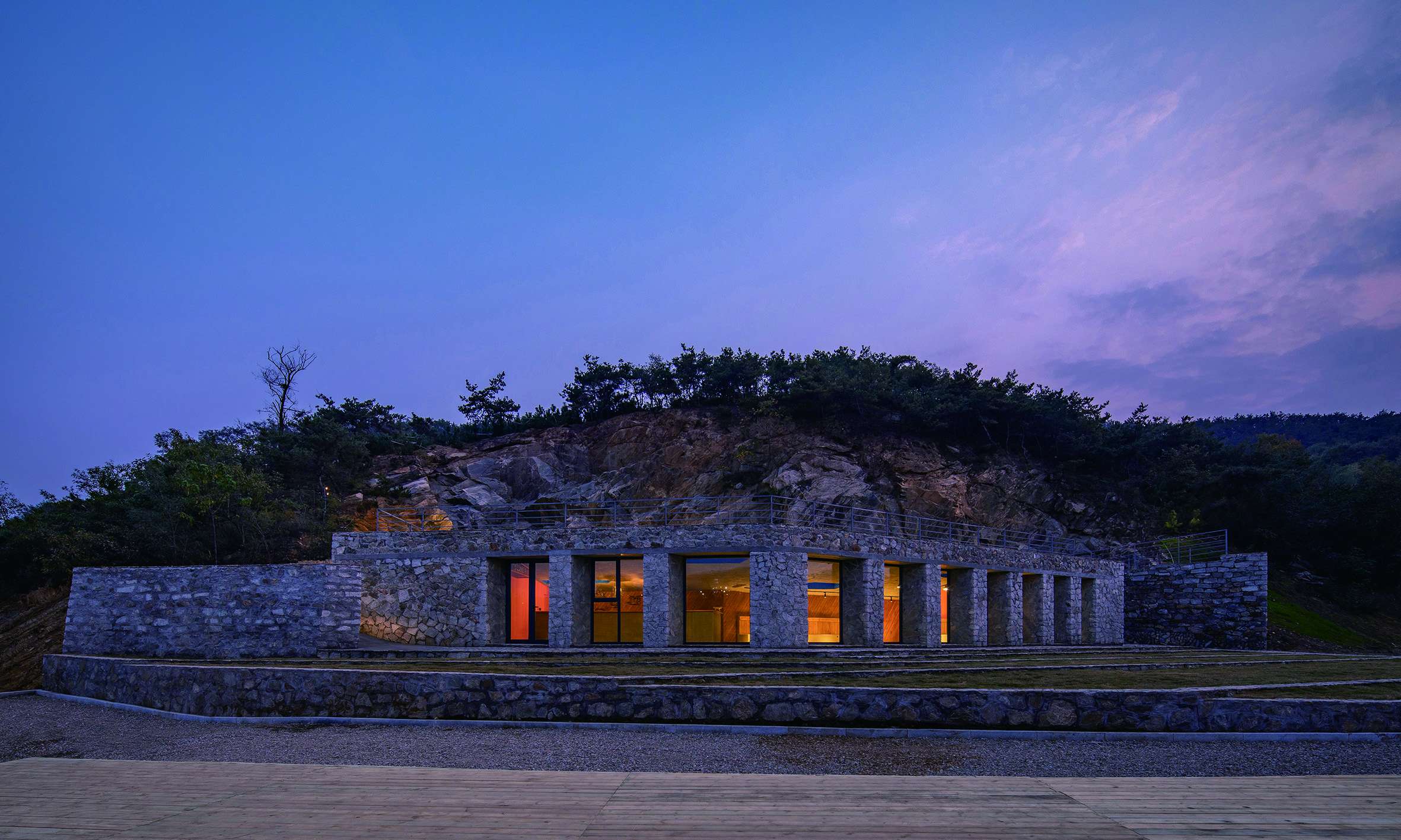
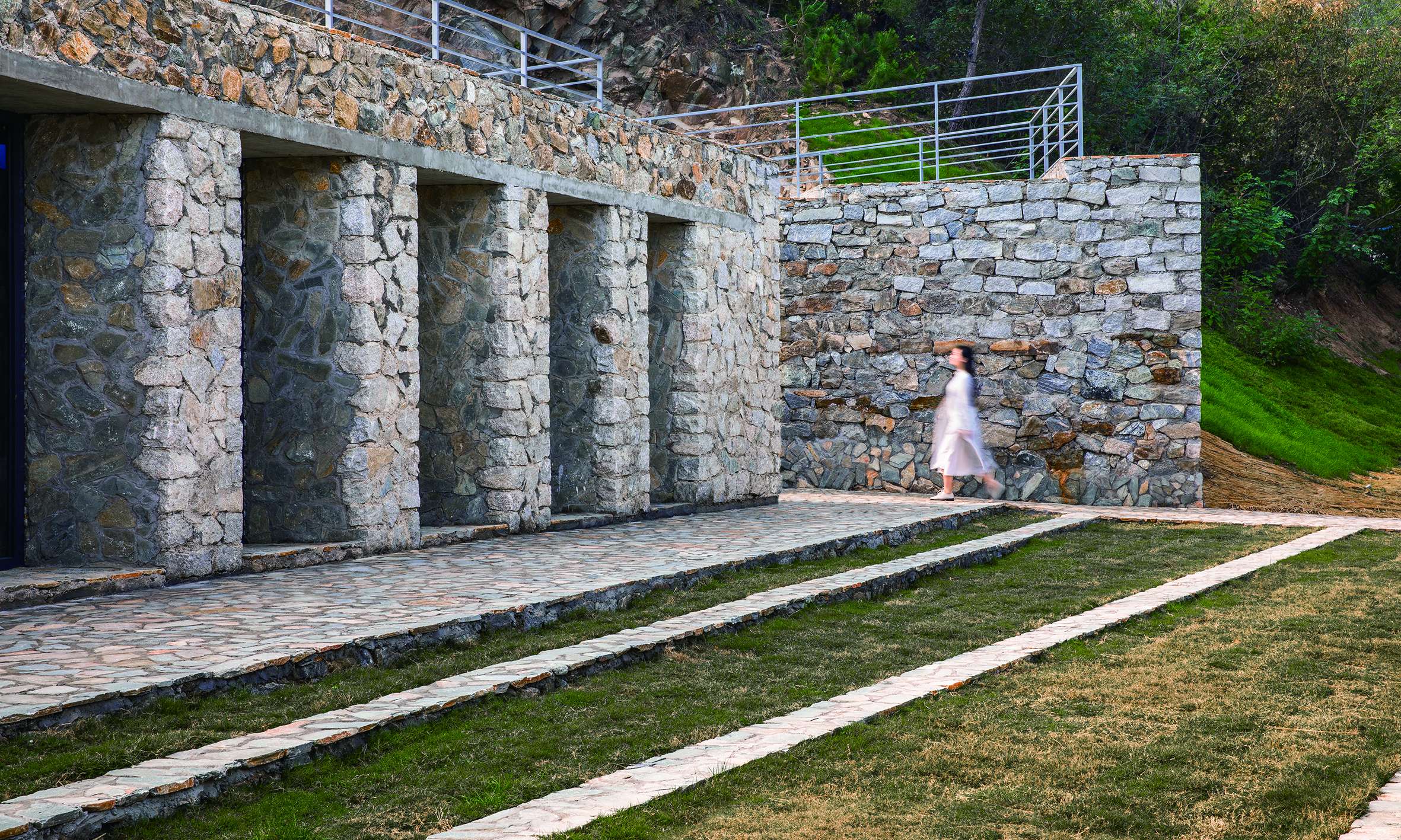
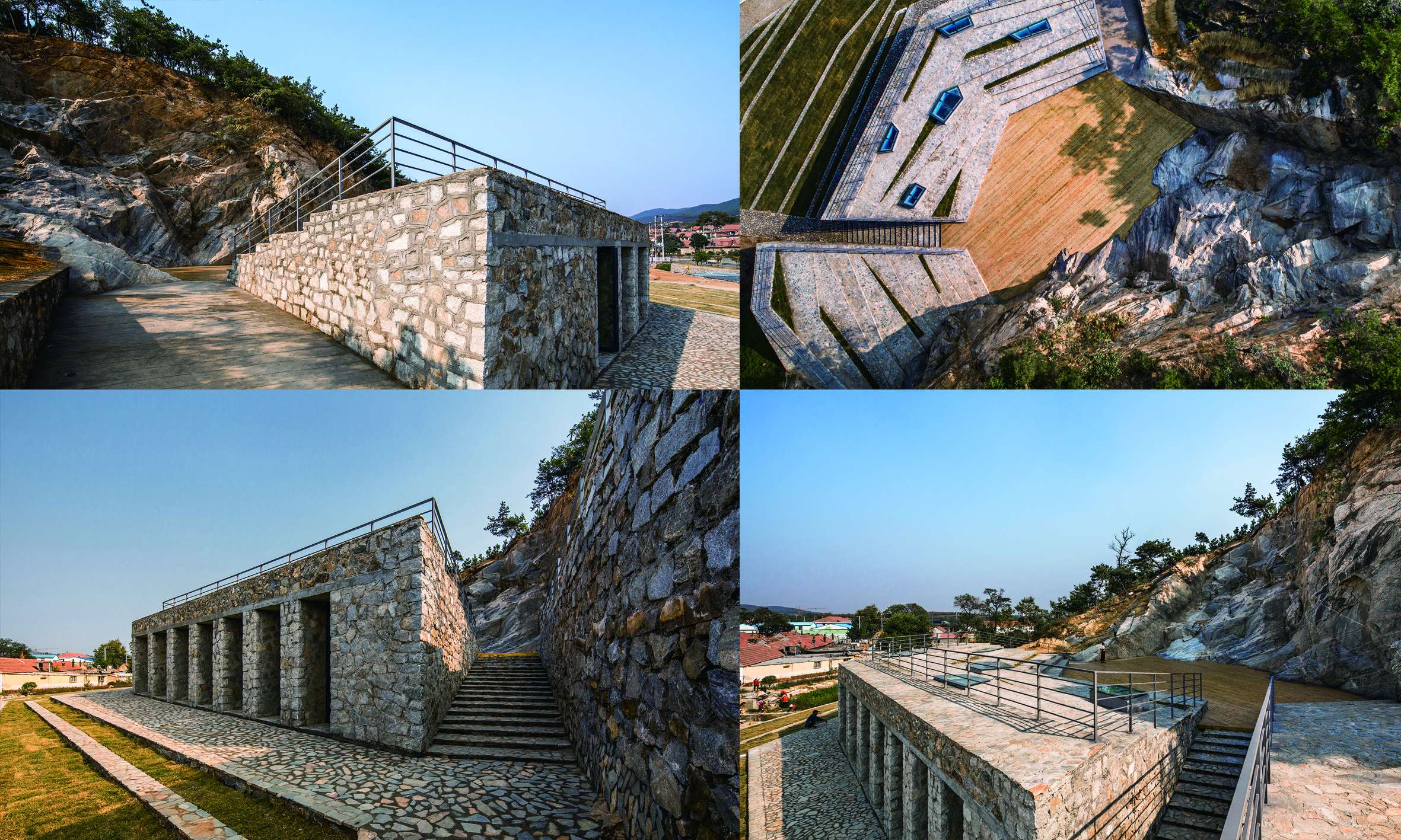
Stone Nest Amphiteatre
Stone Nest Amphiteatre
Stone Nest Amphiteatre
In its previous life, the Stone Nest Amphitheatre was a small-sized stone pit located in the Wujiatuan Village in the city of Weihai, Shandong Province, China, given a name by the local as “Shi Wo Zi (Stone Nest)”, which has been abandoned for years. The architect has been especially impressed by the exposed jagged precipice and steep cliff, which renders a presence of some kind of artificial nature with its old traces of quarrying. The new building will include an open-air amphitheater to provide community services for the surrounding villagers, such as public gatherings, cultural and leisure activities, to solve the long-term lack of public community space in the area. At the same time, music festivals, drama festivals and other activities can also be held in the new building, bringing vitality, economic income and public exchanges to the local area.
The project covers an area of about 1500 square meters. The architect hopes to deal with the site, the form of the building and the relationship between them in a light manner. The original cliff in the venue is completely preserved without any treatment and becomes the background wall of the theater. Because of its arc form, the stone wall has an excellent acoustic effect. The grandstand is set around the stone wall, gradually raised from the stage ground level, forming a gathering field. The shape of the stage and stand is set according to the original terrain and does not pursue symmetry; the steps of the stand are designed to be free fold line state, further strengthening the landscape of the site. In order to provide more space for the use of the square, the riverway in the site is partially covered, forming an open space around the theater, which provides the possibility for holding large-scale events. The material covering the river course is anticorrosive wood, and this process is not irreversible.
A new architectural volume has been hidden under the grandstand. In terms of function, it includes storage, public toilet and cafe, which can provide logistics and public supporting services for the theater. The facade of the building is composed of a series of French window openings. The wall thickness between the windows is intentionally strengthened, through which the architect hopes to give a sense of cave and respond to the history of the original quarry on the site. Steps and ramps are set on both sides of the building for people to enter and exit the stage area.
The building materials are made of local traditional stone-laying construction technique, and most of the stones come from the rubbles excavated when the site was leveled. The architects adhere to the concept of sustainable construction: all materials are from the local area, and traditional technology is adopted for the facade, as sustainability of culture.
After the building was put into use, several community activities have been held there and received positive response from the local residents and villagers.
